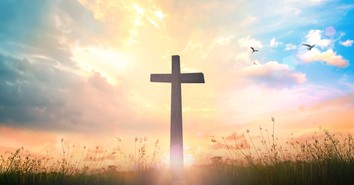Is the Christmas Tree Pagan in Origin?

In a matter of hours, it looks like Christmas exploded out of boxes and totes while we begin decorating for Christmas as I sing at the top of my lungs, “It’s the most wonderful time of the year.” Of course, my kids act like little grinches at first. They try to put a damper on my merry fun by stating facts about how Christmas is a pagan holiday. This includes the timeless question: “is the Christmas tree pagan?” Is there a worldly history to the Christmas tree tradition?
My teenagers may be little grinches first but by evenings end, they stare at the newly decorated tree in wonder. But the first time my kids asked the question ‘is the Christmas tree pagan’ did get me wondering, where did the Christmas tree come from?
History of Paganism in the Origin of Christmas
The meaning of the pagan origin is generally characterized as those practices in religions that are not Christian. These religions include Buddhism, Hinduism, Muslims, Wicca, Druidry, and Gwyddon; whereas some argue that a pagan is anyone with no religion at all. Some of these religions worshiped animals, rocks, trees, and indulged in perverse sexual practices and sacrifices.
The word Pagan come from the Latin word paganus which means “country dweller.” Paganism refers to those who worship more than one god and any form of paganism is false doctrine. The Apostle Paul addressed the truth of Paganism to believers in the book of Romans (1:22-27). Paul described them as worldly and materialistic. Paul then goes on to tell us why they did this: “Furthermore, since they did not think it worthwhile to retain the knowledge of God, he gave them over to a depraved mind, to do what ought not to be done” (Romans 1:28). However, as Christianity began to spread, some of the pagan customs were incorporated into traditions and eventually into holidays. Christmas traditions and practices were inspired by traditions from the Celtics, Druids, the Romans, and more.
Interestingly, all of these different groups all shared one big celebration around the time of Christmas—The Winter Solstice Celebration. Those living in the northern hemisphere celebrated the winter solstice which is the shortest day of the year. So, now that you have an idea of the background, let’s look at some pagan traditions that have become associated with Christmas.
Not only is December a time to celebrate winter solstice, but between the 17th and 24th of the month, the Romans also celebrated Saturnalia. This pagan holiday was in honor of the agriculture god, Saturn. Romans spent the week giving gifts, feasting, drinking, and being joyful—much like what we do at Christmas time.
Other traditions with pagan roots also include kissing under the Mistle Toe, decking the halls with holly, and singing Christmas Carols. While the tradition of going door-to-door singing to your neighbors comes from another pagan tradition called wassailing. This Anglo-Saxon phrase ‘waes hael,’ translates to ‘good health.’ Wassilers would roam throughout their villages in small groups while singing loudly with the goal of banishing evil spirits and wishing good health to their fellow villagers.
Is the Christmas Tree a Pagan Tradition?
Does this mean the Christmas tree is rooted in pagan origin? Christmas trees do have a pagan orgin. The earliest recording of the Christmas tree goes back to European pagans during the Saturn festival where they would use branches of evergreen fir trees to brighten the space with color to compensate for the dull winter colors. It was believed that evergreens would keep away illness, witches, ghosts, and evil spirits. Evergreens also reminded them of all the green plants that would grow again when summer returned because of the strength of the sun god.
Centuries later, the Germans were the first ones to introduce the Christmas tree to the Americans. It wasn’t a trend at first because of the pagan roots. Devout Christians brought decorated trees into their homes the 16th century. Some believe that Martin Luther, the 16th century Protestant reformer is accredited to being the first to add lighted candles to a tree. It is believed while he was walking home one winter evening and composing a sermon, he was awed by the stars twinkling amidst the evergreens. In order to recapture the brilliance of the light for his family, he brought in an evergreen and added lit candles.
Eventually the Christmas tree was adopted into practice in the late 1800’s. Since that time, decorations have changed from berries, nuts (as gifts from God’s harvest based on Psalm 136:25), gingerbread and candles (based on John 8:12, Genesis 1:16) decorate their Christmas trees with personalized ornaments and ornaments that represent Christ’s birth including the angels or stars on the top of the tree.
How Do We Keep Christ the Center of Christmas?
It’s easy to get caught up in the glamor of holiday sales and steep discounts when it comes to Christmas not to mention the awe and glow of the Christmas tree and Christmas lights. While commercialism abounds with tales of Santa Claus, and Elf on the Shelf, the true meaning of Christmas can get lost in it all. Yet, Christmas is the time of year where we can reflect on God’s love for humanity and the gift of His Son, His love letter (the Bible) and the promise of eternal life.
Christ’s birth transformed history and saved us all. His birth over 2,000 years ago in Bethlehem fulfilled the prophecy and His sacrifice on the cross saved humanity. John 3:16 (NIV) tells us: “For God so loved the world that he gave his one and only Son, that whoever believes in him shall not perish but have eternal life.”
If you’re looking to keep Christ in Christmas this year, the first step is to make a commitment. Even though the holiday season is a busy time, it’s important to keep the focus on enteral life and the birth of Jesus. Consider making a prayerful commitment to keep the focus on Jesus and take pointed steps to live that out.
One of the best ways to keep the birth of Jesus in mind this holiday season is to read the accounts of Christ’s birth as a family. You can make out a reading plan that integrates Matthew 1, Luke 1, and John 1 as well as other Scriptures that focus on the life of Jesus.
Other traditions include setting up a manger or talking about what the color green represents as a Christ follower, as well as the tree, and the even the star as you decorate the tree. You could also consider planning a project of goodwill to do as a family. You can volunteer your time at a soup kitchen, homeless shelter, help with meals on wheels, visit shut ins, collect coats for those in need, or you can pick families to pray over the entire Christmas season.
You can send out Christmas cards or write letters that convey the meaning of the season or tell of how God worked through your life this past year. It’s beautiful to be reminded of how God works all things together for our good.
Quite truthfully, there are so many ways to keep your focus on Christ this Christmas. No matter what happens, cling to Christ. Cling to the hope He brought into the world with His birth. Cling to the wonder and awe that God would come in the form of a newborn babe, wrapped in strips of cloth in the manger. Cling to the wonder of how low He brought Himself in order to change the course of the world.
Next time you think, “Is the Christmas tree pagan?” look at the tinsel, the lights, and the fully decked out trees, and remember the true meaning of Christmas is God’s beautiful story of unconditional love, forgiveness, miracles, and redemption.
Photo Credit: ©Unsplash/Jeremy McKnight

Originally published December 07, 2021.





